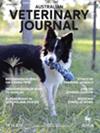Cervical intervertebral disc disease in 307 small-breed dogs (2000–2021): Breed-characteristic features and disc-associated vertebral instability
Abstract
Objective
To evaluate the breed-characteristic features of cervical intervertebral disc disease (C-IVDD) and associated vertebral instability in small-breed dogs and to present the concept of intervertebral disc degeneration and associated instability stage, method of diagnosis, treatment and outcomes.
Animals
In total, 307 client-owned dogs with C-IVDD treated with spinal cord decompression with or without vertebral stabilization (2000–2021).
Methods
Information on age, sex, affected sites, stabilized sites, diagnostic methods for vertebral instability and outcomes were retrieved. The patient's age, affected sites (cranial vs caudal discs), and frequency of vertebral stabilization were compared in six CD and five NCD breed. Multivariable analyses of the chondrodystrophic (CD) vs non-CD (NCD) groups, and vertebral stabilization (dogs stabilized vs dogs not stabilized) were performed.
Results
In total, 222 (72.3%) and 77 (25.1%) were CD and NCD breeds, respectively. Vertebral instabilities were diagnosed based on the survey radiographs with computed tomography/magnetic resonance imaging (n = 2), dynamic myelography (n = 29), intraoperative spinal manipulation (n = 11) or second surgery in dogs with persistent postoperative paraspinal pain (n = 3). Of these dogs, 295 (96.1%) recovered (median follow-up: 8.5 [range, 1–119] months). Significant differences in age, affected sites and frequency of stabilization were noted among the breeds. Older age and frequent vertebral stabilization were the associated factors for the NCD breed dogs. Male dogs, caudal discs affected (C5–T1) and the NCD breed dogs were risk factors for the dogs with vertebral stabilization.
Conclusion
Vertebral stabilization is indicated for small-breed dogs with cervical disc-associated vertebral instability.

 求助内容:
求助内容: 应助结果提醒方式:
应助结果提醒方式:


